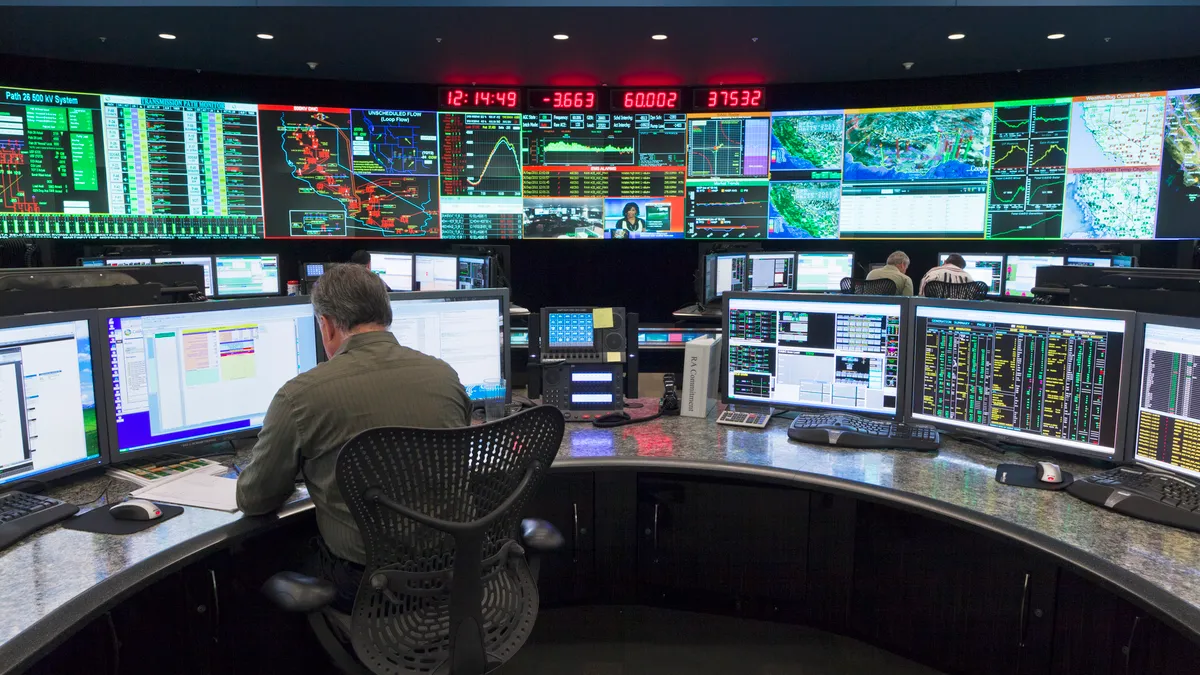Dive Brief:
- Utilities must make significant investments in cybersecurity in order to protect the grid, and customers should understand that those investments are necessary not just to ensure electric service but for many areas of daily life to function, National Cyber Director Chris Inglis said Monday at the National Association of Regulatory Utility Commissioners' (NARUC) winter policy summit.
- "It's a capital exercise," Inglis said. "And if you haven't invested there, then you set yourself up for a really wild ride after the event."
- The cost of security will also likely include manufacturing more grid components in the United States, or in nations known to be trustworthy. "Because of concerns of equipment coming, in particular from China, we may have to spend more money to get equipment from more U.S.-friendly countries," Berkshire Hathaway Energy President and CEO William Fehrman said at the same event.
Dive Insight:
NARUC kicked off its first in-person policy summit in two years with a discussion of grid security, and in particular the cost of security.
Cybersecurity isn't a "cost center," Inglis said. "This isn't something that we do for its own sake. This is so integral to the conduct of [customers'] daily lives, that they need to think about it in terms of its contribution for the larger plane."
The cybersecurity panel was moderated by Virginia State Corporation Commission member Judith Jagdmann, who said utilities are searching for ways to moderate some of the cost impacts on customers.
"We're particularly interested in any monies that can find their way to help defray ratepayer costs," Jagdmann said. "There's a big ask, for noble goals. And from my perspective, the number one impediment of reaching goals, is ratepayer costs."
That comment was directed primarily towards U.S. Department of Energy Deputy Secretary David Turk, who noted the bipartisan infrastructure bill included $11 billion for the power grid, including money for transmission, smart grids and resilience. And there are other provisions being considered by Congress that were initially included in the stalled Build Back Better bill.
"We'll have a lot of funding opportunities and other things that come out," Turk said. Tax incentives to spur grid investment, however, might have the largest impact, he said.
"If you're thinking about unleashing technologies at scale and pace ... I think it's under-appreciated how much these tax incentives can actually be helpful to consumers, helpful to all of us, in this time of high inflation right now," Turk said.
DOE is also preparing to release 14 reports in response to President Joe Biden's executive order for an analysis of the United States' supply chains.
"We need to get very pragmatic very quickly and figure out what are the most critical parts of the supply chain," Turk said. "What's the funding that's going to be necessary to have these supply chains be here in the U.S. or with our allies? ... We're going to have to make some tough choices. Congress is going to absolutely have to be part of it."
The need to procure trustworthy equipment will drive up prices for consumers, said Fehrman, but the tradeoff may be necessary.
"We now worry about every single component that is in ... the equipment that we buy," Fehrman said. "In the past, we would very much focus on the lowest cost, but today the decision that we present to you is really the lowest risk."
The long-term solution is to bring the manufacturing of core grid components, like large transformers, back into the United States, said Fehrman. "We have to get back to building these core components in this country," he said, but added higher costs will be a challenge.
"We are not as competitive in this country in building major equipment, but we may just have to live with that and get that manufacturing capability back in this country where we know what it is that we're dealing with," Fehrman said.














